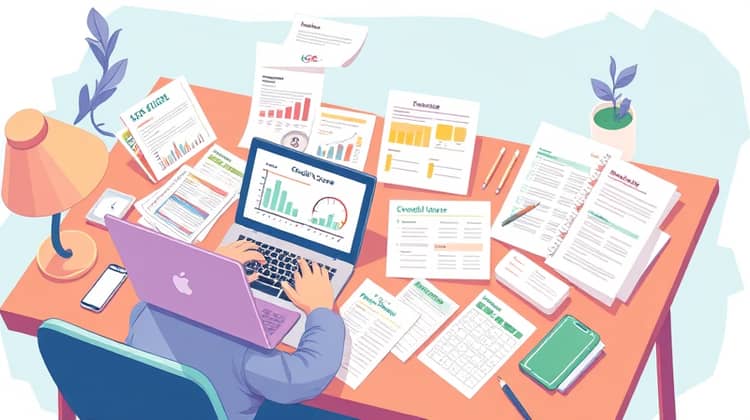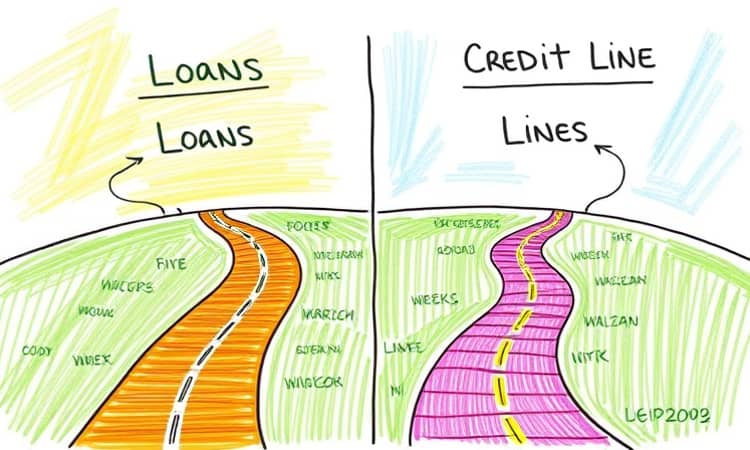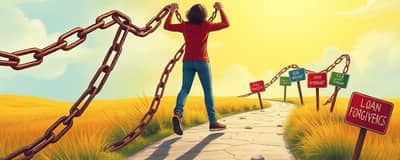In the world of finance, understanding the differences between loans and credit lines is crucial for making informed decisions. Many people often find themselves confused about which option suits their financial needs best. Both loans and credit lines serve as methods to borrow money, but they operate under different conditions, making it essential to grasp their key distinctions before committing to one.
This article aims to provide a comprehensive overview of both loans and credit lines, highlighting their definitions, advantages, and scenarios in which one may be preferred over the other. By the end, readers will have a clearer understanding of each option and how to approach the application process.
What is a Loan?

A loan is a fixed amount of money that is borrowed from a lender and is repaid over a specific period with interest. Loans are typically used for large, one-time expenses such as purchasing homes, cars, or funding education. Borrowers agree to a schedule of payments that includes both principal and interest, ensuring the loan is fully repaid by the end of its term.
The structure of loans tends to be straightforward; they come with a predetermined interest rate and payment schedule, allowing borrowers to plan their financial commitments. Additionally, there are various types of loans, including personal loans, mortgages, and auto loans, each serving different purposes and repayment terms.
Since loans involve a clear agreement between the borrower and the lender, they are often perceived as less risky than credit lines for both parties. However, if a borrower fails to repay the loan on time, it can lead to serious financial complications and a detrimental impact on their credit score.
What is a Credit Line?

A credit line, also known as a revolving credit line, is a flexible borrowing option that allows borrowers to withdraw, repay, and borrow again up to a certain limit. Unlike a loan, which provides a lump sum upfront, a credit line gives you the freedom to borrow only what you need when you need it, making it particularly useful for managing cash flow or unexpected expenses.
Credit lines come with interest rates that may vary depending on the amount borrowed and the lender's policies. Borrowers can draw on their credit line multiple times as long as they stay within the established limit, and they are only required to pay interest on the amount they actually use. This adds an element of flexibility that is often attractive for individuals and businesses.
However, this flexibility can lead to the temptation of accumulating debt, as the ease of access may encourage unnecessary spending. Additionally, if payments are not made on time, borrowers may face higher interest rates or fees, and their credit score could suffer accordingly.
Key Differences Between Loans and Credit Lines

Loans and credit lines serve different financial needs and have distinct characteristics.
- Loans provide a lump-sum amount with a fixed repayment schedule, while credit lines offer flexible access to funds up to a limit.
- Interest on loans is calculated on the entire amount borrowed, whereas interest on credit lines is charged only on the amount accessed.
- Loans generally have a fixed interest rate, while credit lines may come with variable rates that can change over time.
These differences highlight the need for careful consideration of one's financial situation before choosing between a loan or a credit line.
When to Choose a Loan

Choosing a loan may be the best option in scenarios where you require a specific amount of money for a known purpose. For instance, if you need to buy a car, fund a home renovation, or pay for college tuition, a loan can provide the necessary funds and a predictable repayment structure.
Moreover, loans are characteristically ideal for large expenditures or when you want to keep borrowing costs predictable. As such, they can help prevent overspending by establishing a defined budget through fixed payment amounts.
- You have a large, one-time expense that requires a set amount of funding.
- You prefer predictable and fixed payment terms to help manage your budget.
- You want to avoid the temptation of overspending with a defined repayment plan.
By considering the purpose, amount, and structure of the financing needed, borrowers can make a more informed choice toward selecting a loan.
When to Choose a Credit Line

A credit line is often advantageous for those who need ongoing access to funds for flexible spending or fluctuating expenses. If you’re running a small business, for instance, a credit line can help manage irregular cash flow without the need to reapply for funding every time. This makes it an excellent option for managing things like inventory costs or operational expenses.
Additionally, if individuals want a financial safety net for emergencies or spontaneous purchases, a credit line can provide immediate access to funds without committing to a full loan process.
- You need flexibility in borrowing to cover fluctuating expenses.
- You want to have a safety cushion for emergencies without relying on a fixed amount.
- You would prefer to only pay interest on the amount you borrow rather than a lump sum upfront.
Considering these factors can help individuals and businesses make better financial decisions regarding whether a credit line is right for them.
How to Apply for a Loan or Credit Line

The application process for loans and credit lines can vary, but both generally require financial information and credit assessments to determine eligibility and the terms offered. Understanding the necessary steps can aid in preparing for either option effectively.
Gathering personal financial documents, understanding your credit score, and being clear about your borrowing needs are important first steps to entering the application phase.
1. Applying for a Loan:
Applying for a loan typically involves submitting an application to a lender that includes the amount needed, the purpose of the loan, and financial details such as income and credit history. Most lenders will conduct a credit check to ascertain the borrower’s creditworthiness before approving the loan.
Once the application is approved, the borrower will receive the loan amount directly, followed by a structured repayment schedule with interest fees defined upfront.
- Gather necessary financial documents including proof of income, employment verification, and identification.
- Compare loan options from multiple lenders to find the best terms and interest rates.
- Submit your loan application and await approval based on your financial standing.
Following these steps and being transparent during the application process can enhance chances of securing the loan needed.
2. Applying for a Credit Line:
The application for a credit line is similar to that of a loan, but often more straightforward. Borrowers will submit an application that details their income, debt levels, and purpose for the credit line. Lenders will then assess their risk based on these factors as well as credit score evaluations.
Once a credit line is opened, the borrower can withdraw funds up to the predetermined limit whenever needed, making regular payments based on the amount used rather than the total limit.
- Assess your credit score, as it significantly influences the terms of your credit line.
- Determine your need for credit and choose a lender that meets your requirements for a credit line.
- Complete the credit line application and provide the necessary financial information.
Being prepared with the necessary information prior to applying can lead to a smoother approval process for accessing a credit line.
Conclusion

In summary, comprehending the differences between loans and credit lines empowers borrowers to make educated choices that suit their financial situations. Each option has its unique strength in addressing specific funding needs, whether for fixed expenses or flexible access to cash.
Ultimately, whether you choose a loan or a credit line will depend on your financial goals, borrowing habits, and the circumstances surrounding your financial needs. By evaluating all aspects, individuals can select a product that aligns best with their needs.














